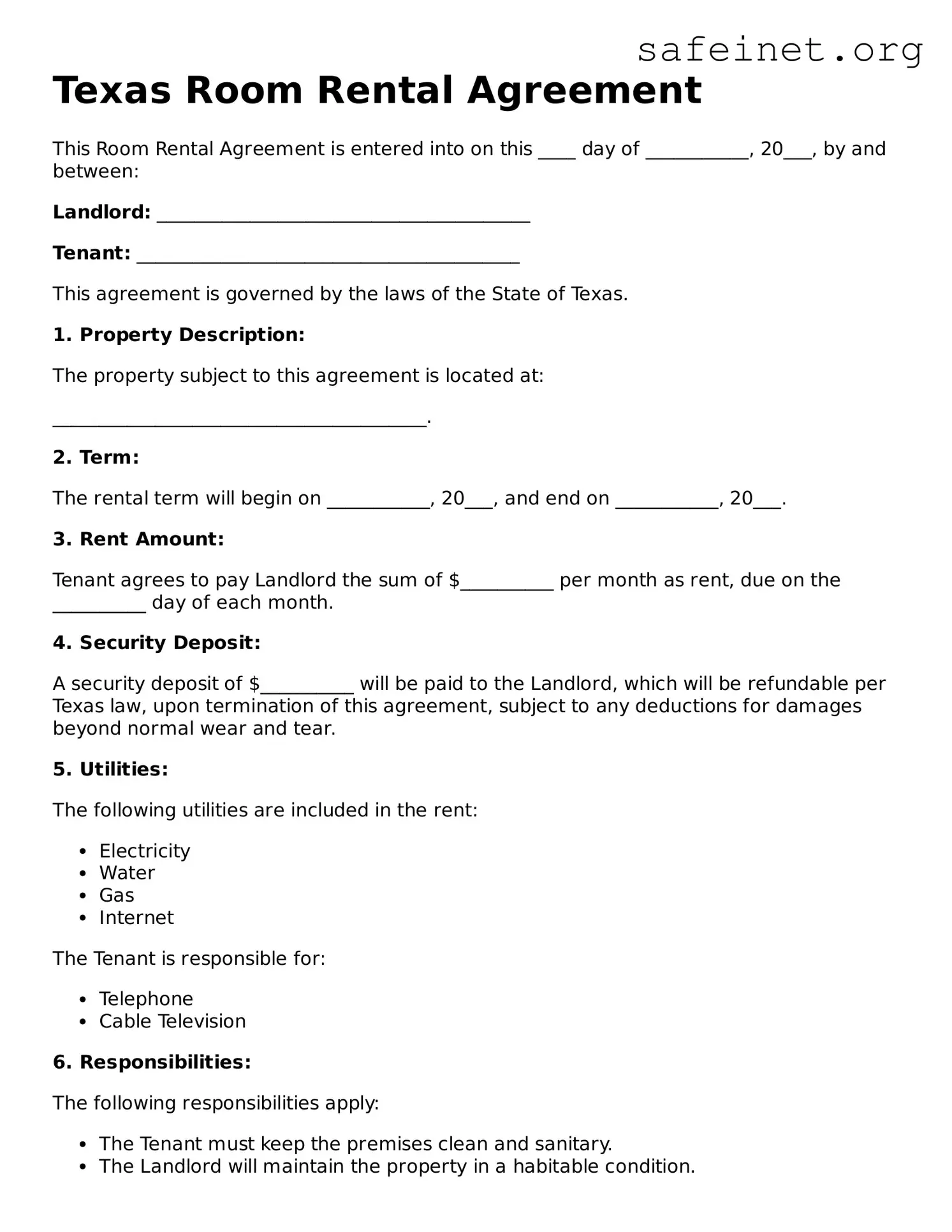What is a Texas Room Rental Agreement?
A Texas Room Rental Agreement is a legal document outlining the terms and conditions between a landlord and a tenant for renting a room in a residential property. It covers essential details such as rental amounts, duration of the agreement, and responsibilities of both parties.
What details should be included in the agreement?
This agreement typically includes the names of the landlord and tenant, property address, rental period, amount of rent, payment due dates, security deposit requirements, and rules regarding the use of common areas. It's important to ensure that all relevant details are clear and specific.
Is a Texas Room Rental Agreement legally binding?
Yes, once both parties sign the agreement, it becomes legally binding. Both the landlord and the tenant are required to follow the terms outlined in the document. Violating the agreement can lead to legal actions or eviction processes.
Do I need to have the agreement notarized?
In Texas, notarization is not required for a room rental agreement to be valid. However, having the agreement notarized can provide an added layer of security by verifying the identities of the signatories.
What happens if a tenant wants to terminate the agreement early?
If a tenant wishes to terminate the agreement early, they should review the document for any clauses related to early termination. Typically, a notice period is required, and there may be penalties. Open communication with the landlord can often lead to a mutual agreement.
Can a landlord increase the rent during the rental period?
Generally, rent cannot be raised until the lease term is over unless the rental agreement specifically allows for adjustments. Landlords must give proper notice before increasing rent, usually according to the terms set forth in the agreement.
What should a tenant do if there are maintenance issues?
Tenants should promptly notify the landlord of any maintenance or repair issues. Ideally, this should be done in writing and include specific details about the problem. The landlord is typically responsible for making necessary repairs according to the terms of the agreement.
Are there rules about subletting the rental room?
Subletting may be addressed in the Texas Room Rental Agreement. If subletting is not explicitly permitted, tenants should seek the landlord’s permission before doing so. Unauthorized subletting can result in lease violations and potential eviction.
What are the tenant’s rights regarding privacy?
Tenants have the right to privacy in their rented room. Landlords typically cannot enter the premises without prior notice except in emergencies. The terms of notice should be clearly stated in the rental agreement.
How can disputes be resolved if they arise?
If disputes arise, the first step should be to discuss the issues directly with each other. If the matter cannot be resolved amicably, the rental agreement might specify mediation or arbitration as next steps. If all else fails, legal action may be necessary.
